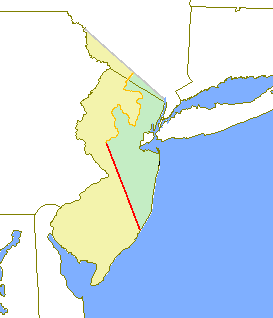The Province of New Jersey was an English colony that existed within the boundaries of the current state of New Jersey prior to the American Revolution.

The land of the province was part of the New Netherlands colony acquired from the Dutch and given to James, Duke of York as part of the Province of New York. Part of the New York province between the Hudson River and the Delaware was then given by James to George Carteret in exchange for settlement of a debt. The new province was named after the Island of Jersey, which was Carteret's ancestral home. Originally it was divided into two provinces, East Jersey and West Jersey, which were united as a single province in 1702.
Many of the houses of the colonists were log cabins. The idea of the log cabin came from the Dutch who had lived there previously. Most of the colonists there were Christian
Since New Jersey was ideally located next to the coast, colonists farmed, fished, and traded by sea. New Jersey also grew quickly because of the slightly high tax rate.
The original boundaries of the province were slightly larger than the current state and extended into present New York state.